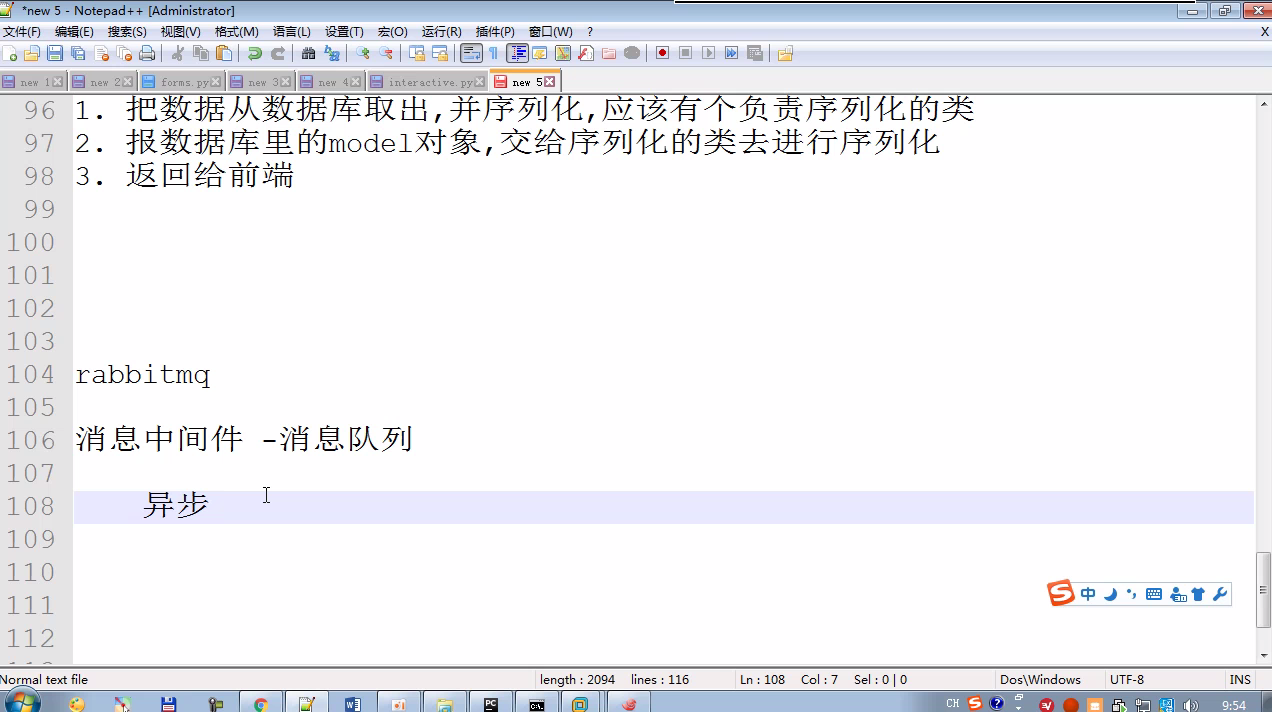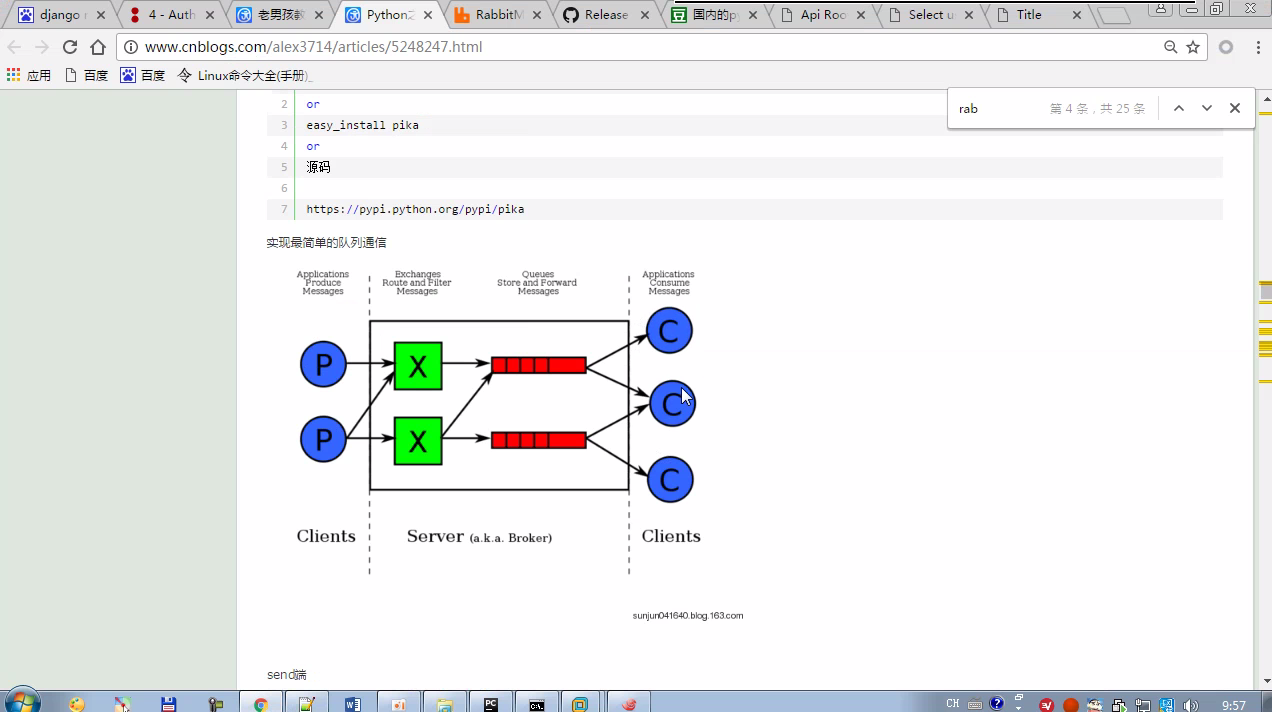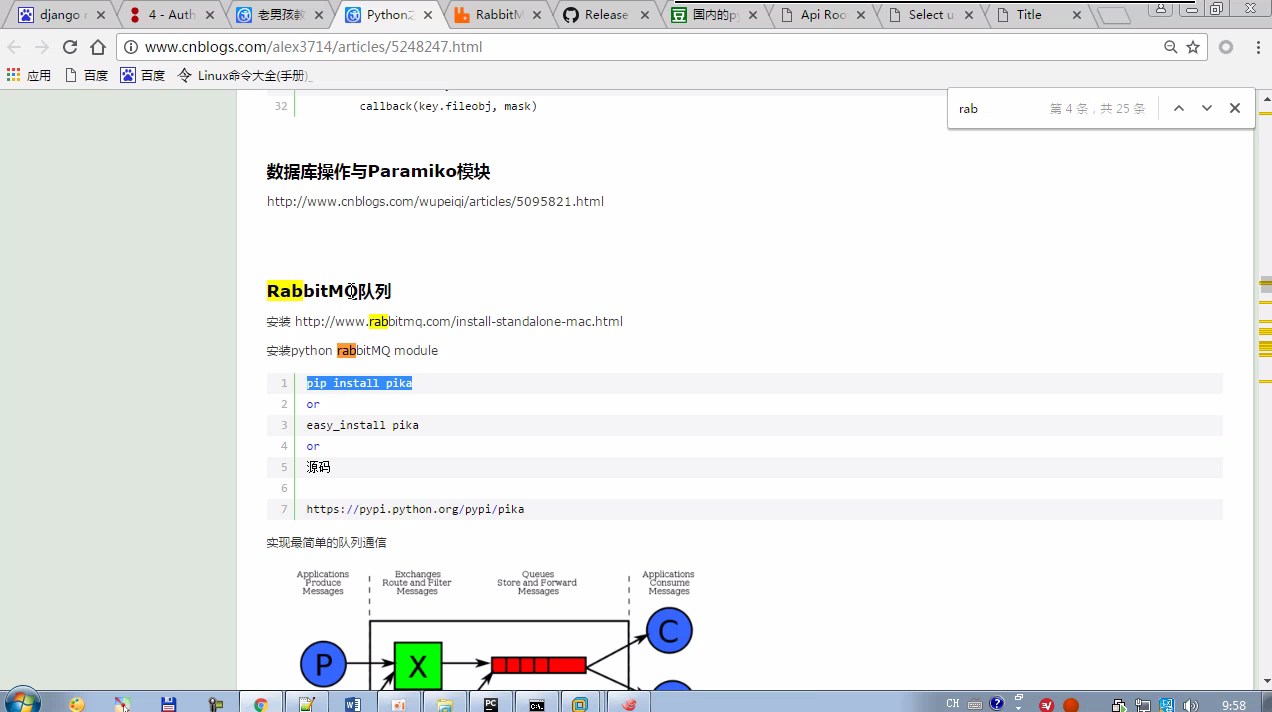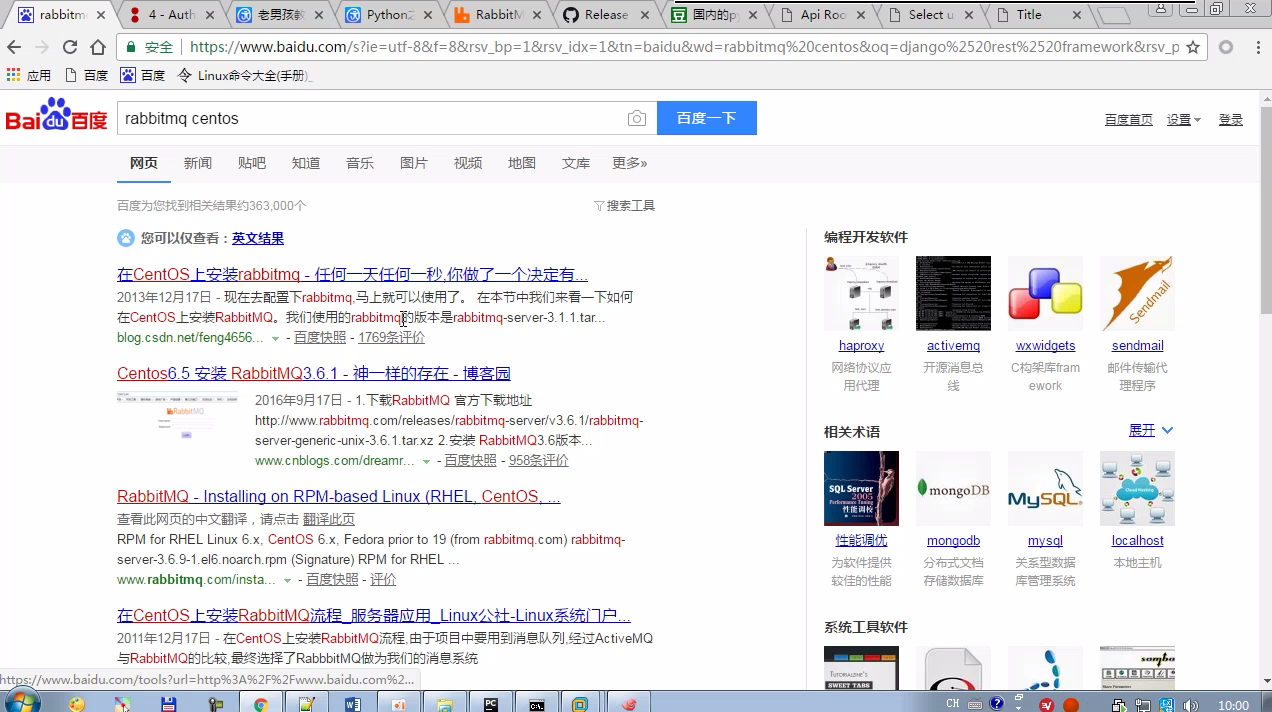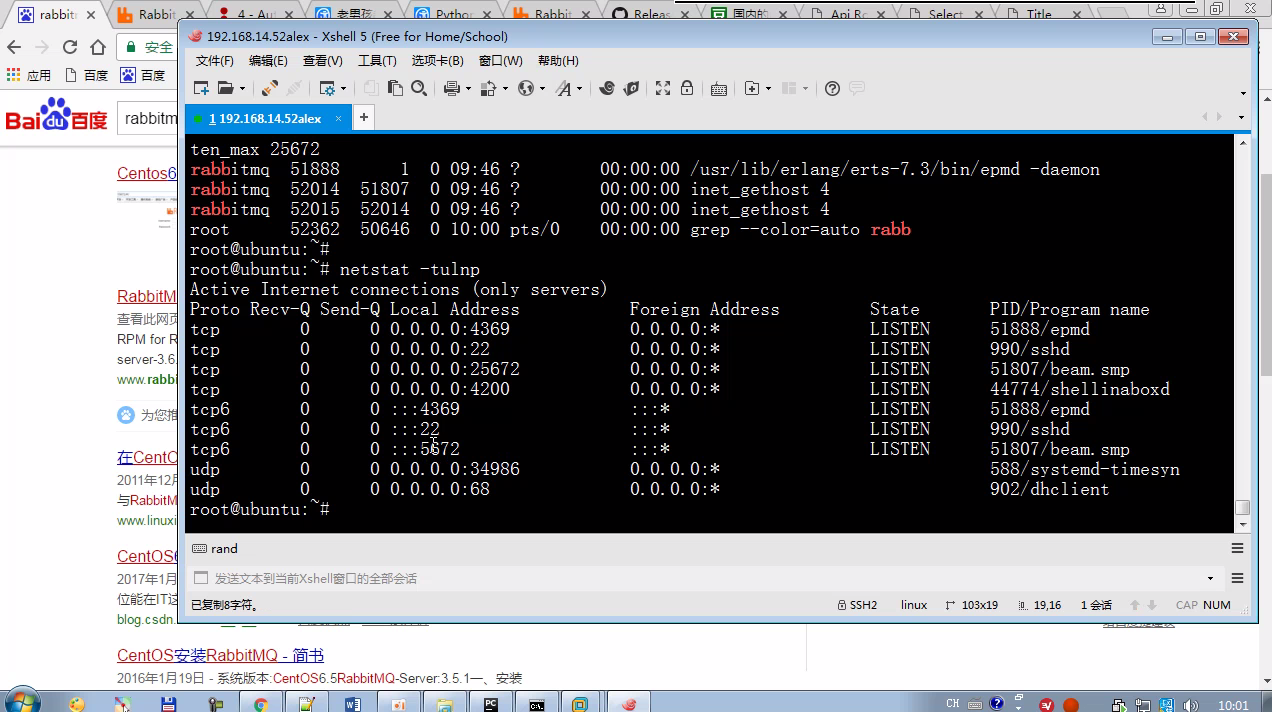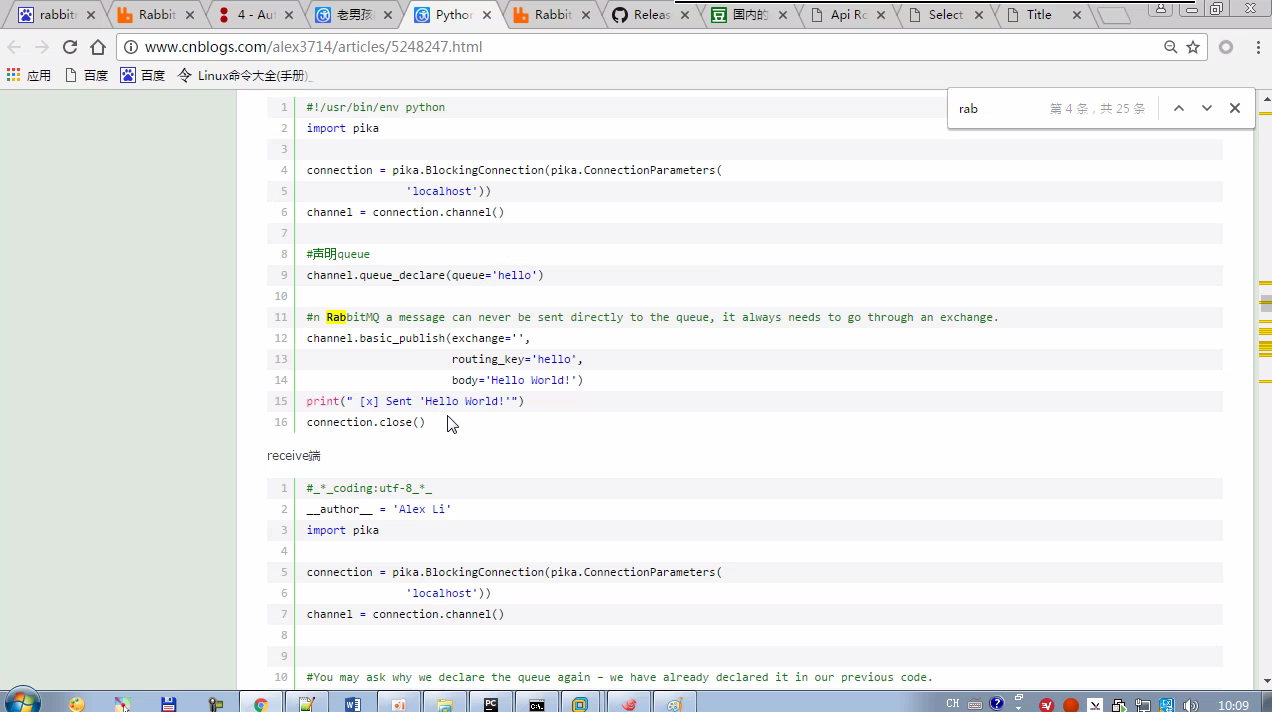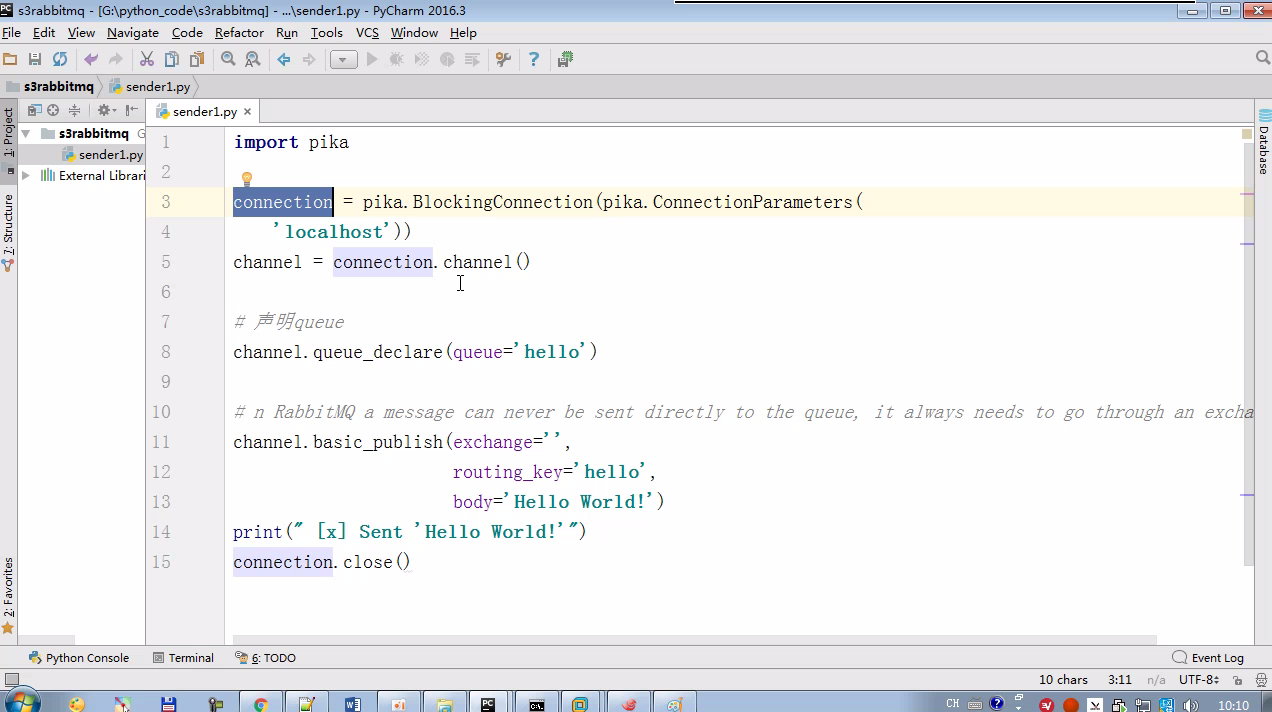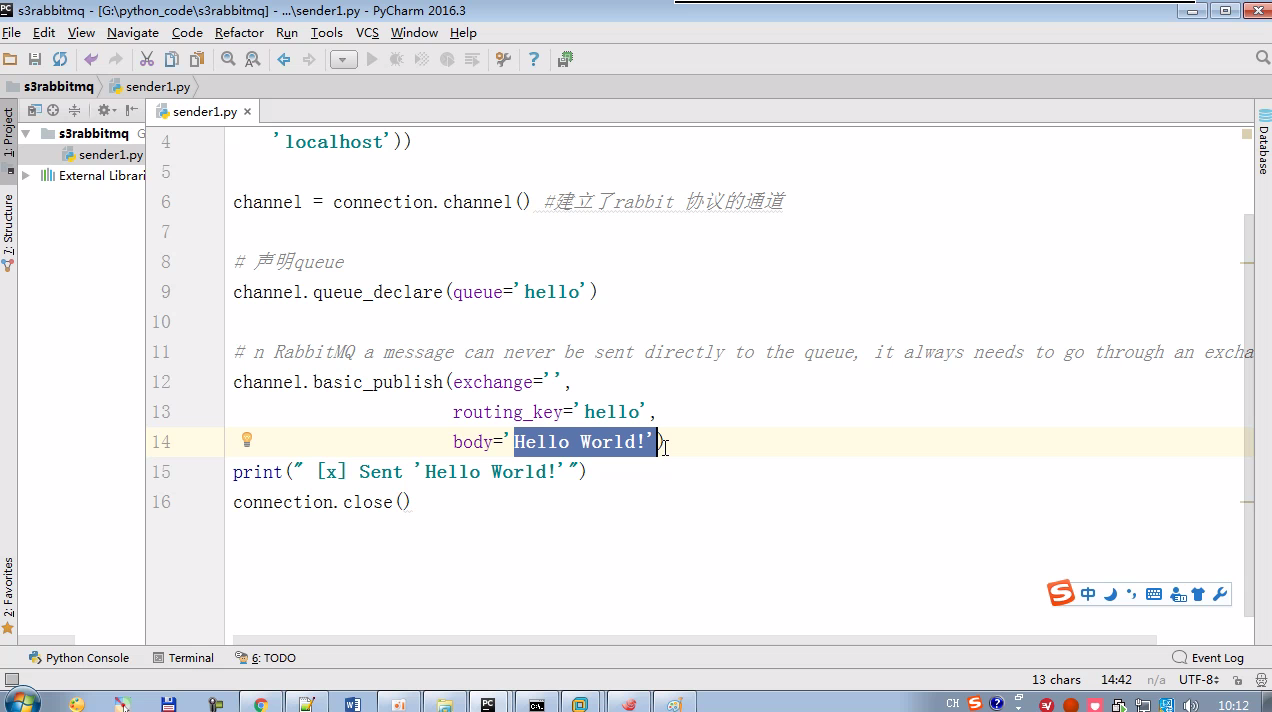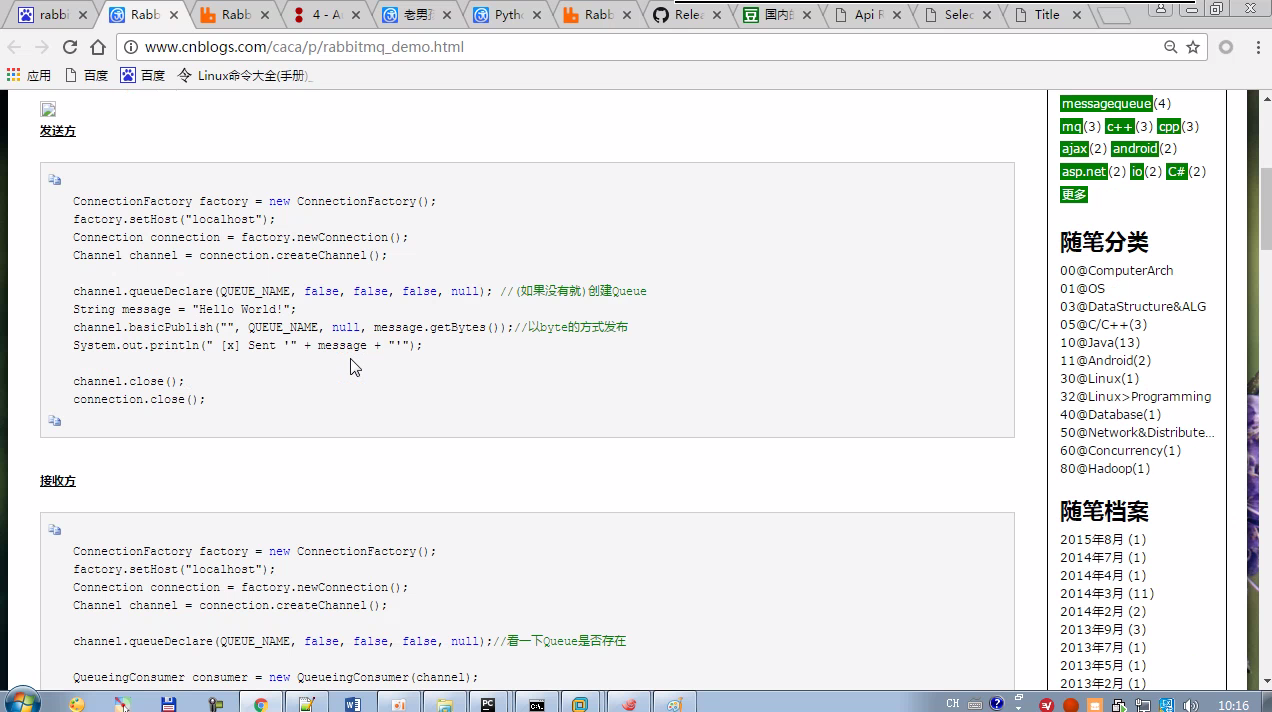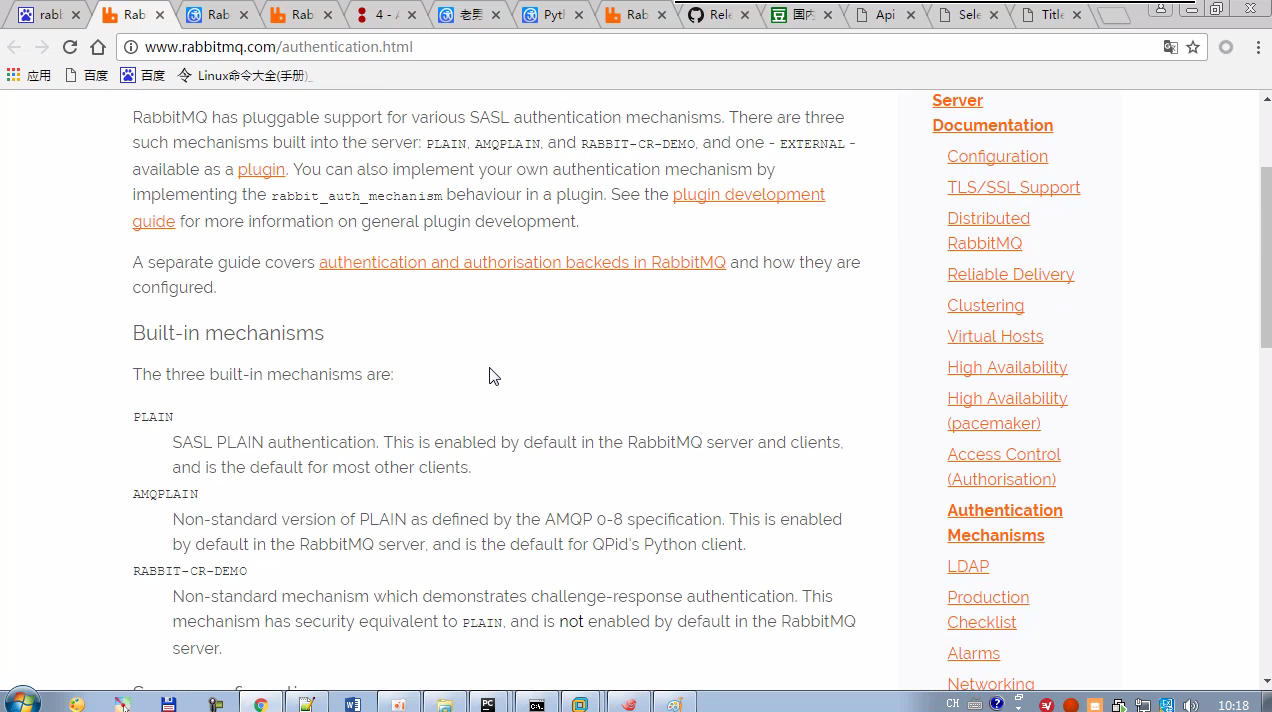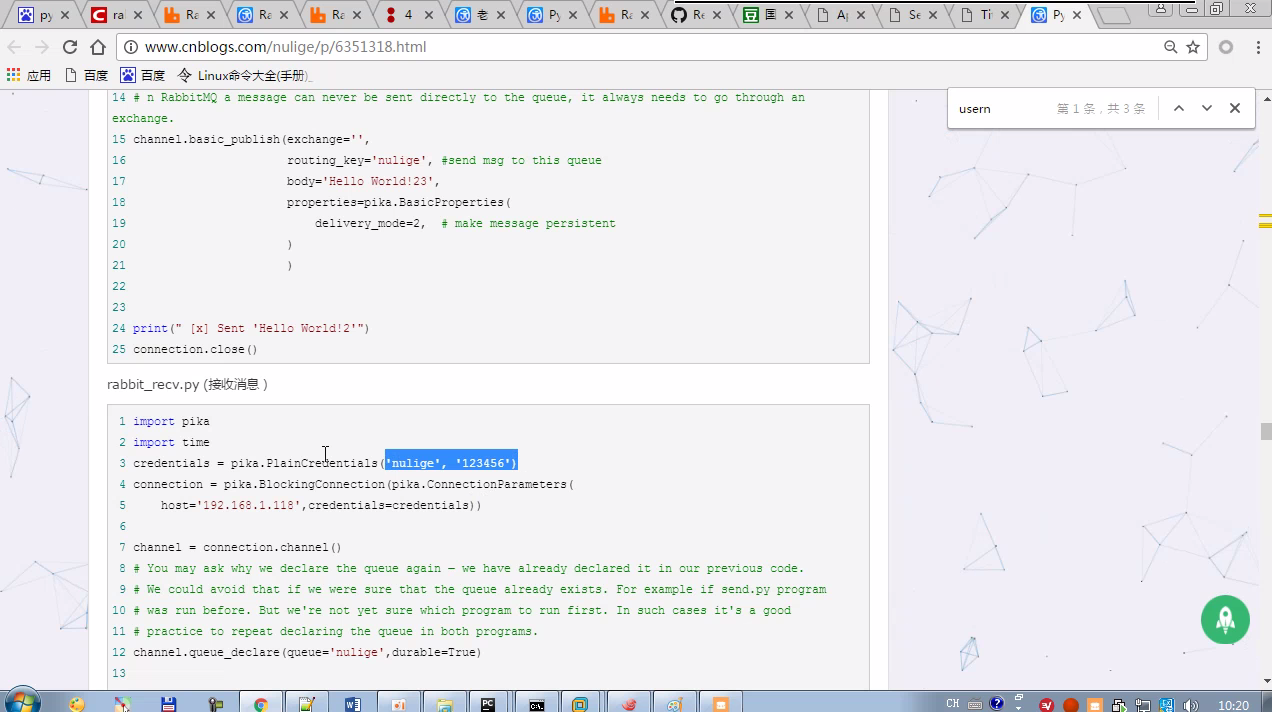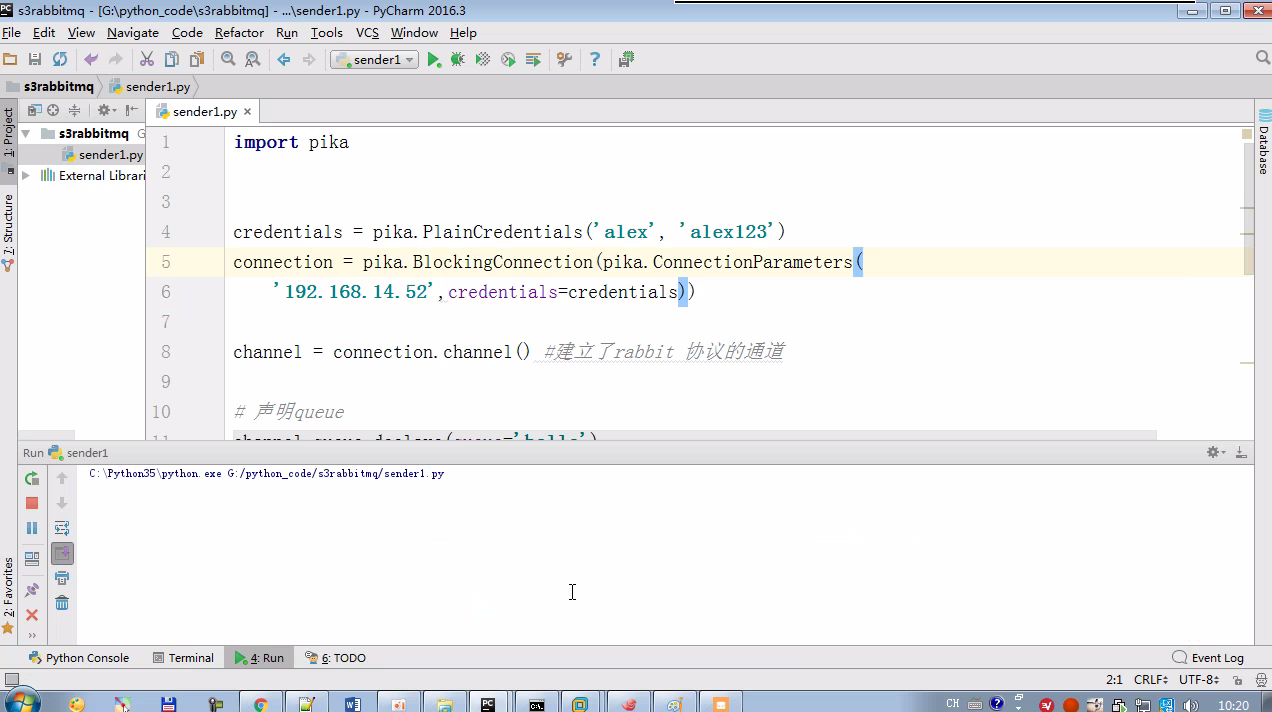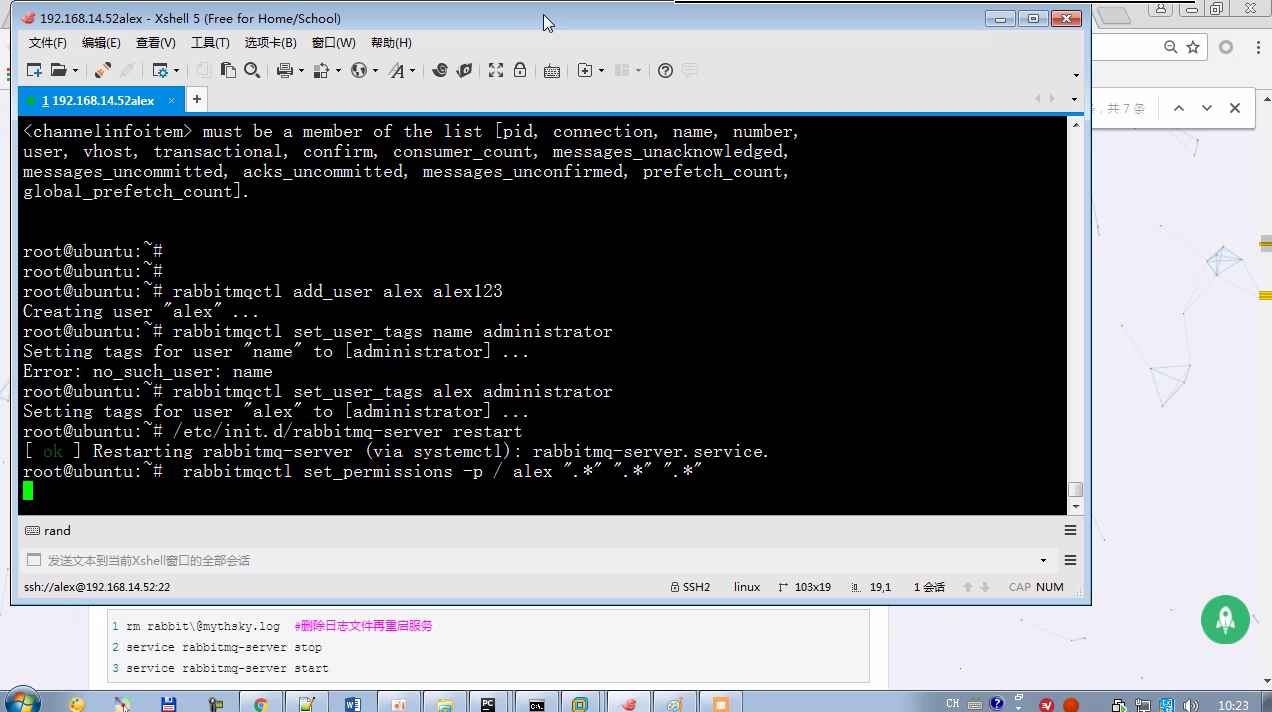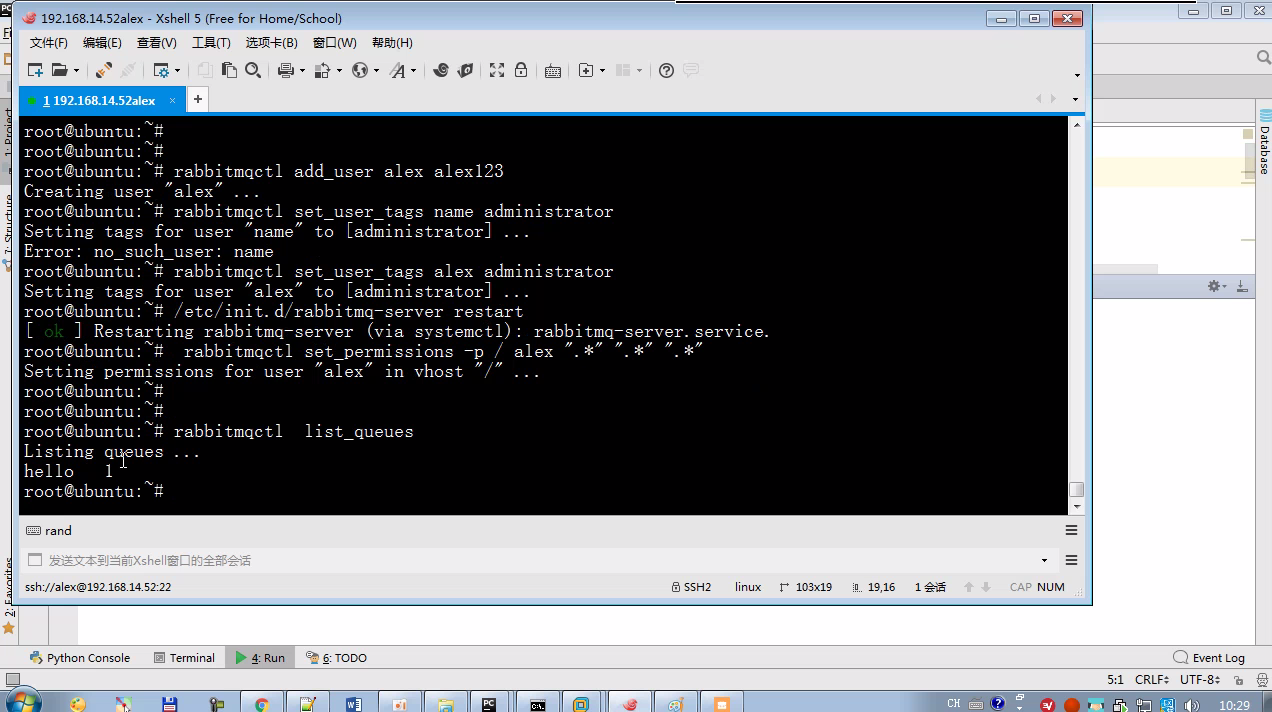开发语言erlang 爱立信公司

import pika credentials = pika.PlainCredentials('alex', 'alex123') connection = pika.BlockingConnection(pika.ConnectionParameters( '192.168.14.52',credentials=credentials)) channel = connection.channel() #建立了rabbit 协议的通道 # 声明queue channel.queue_declare(queue='hello') # n RabbitMQ a message can never be sent directly to the queue, it always needs to go through an exchange. channel.basic_publish(exchange='', routing_key='hello', body='Hello World!') print(" [x] Sent 'Hello World!'") connection.close()

import pika import time credentials = pika.PlainCredentials('alex', 'alex123') connection = pika.BlockingConnection(pika.ConnectionParameters( '192.168.14.52',credentials=credentials)) channel = connection.channel() # You may ask why we declare the queue again ‒ we have already declared it in our previous code. # We could avoid that if we were sure that the queue already exists. For example if send.py program # was run before. But we're not yet sure which program to run first. In such cases it's a good # practice to repeat declaring the queue in both programs. channel.queue_declare(queue='hello') def callback(ch, method, properties, body): print("received msg...start processing....",body) time.sleep(20) print(" [x] msg process done....",body) channel.basic_consume(callback, queue='hello', no_ack=True) print(' [*] Waiting for messages. To exit press CTRL+C') channel.start_consuming()
